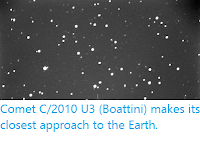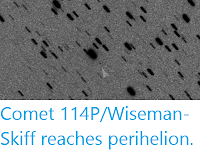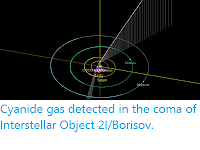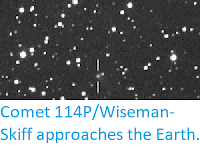Comet C/2019 K1 (ATLAS) makes its closest approach to the
Earth today (Monday 24 February 2020), reaching a distance of 2.29
AU from the Earth (229%
of the distance between the Earth and the Sun, or 342 213 500 km). At
this distance the comet will be not naked eye visible, having a
magnitude of slightly over 16.3, (roughly the same as Pluto's moon
Charon), in the Constellation of Hydra, which is better observed from
the Southern Hemisphere.
The orbital trajectory and current position of C/2019 K1 (ATLAS). The Sky Live 3D Solar System Simulator.
C/2019 K1 (ATLAS) was discovered on 16 May 2019 by the Asteroid Terrestrial-impact Last Alert System (ATLAS) search program.
The name C/2019 K1 (ATLAS) implies that it is a non-periodic comet
(C/), that it was the third comet (comet 1) discovered in
the second half of May 2019 (period 2019 K) and that it was
discovered by the ATLAS program.
C/2019 K1 (ATLAS) is a Parabolic Comet, which is to say a comet that
has been disrupted from an orbit in the Oort Cloud, and to be passing
through the Inner Solar System on a parabolic orbit that will probably
not bring it back again. This parabolic trajectory tilted
at an angle of 87.2° to the plain of the Solar System, that brought it
in to 2.01 AU from the Sun at perihelion (i.e. 2.01 times as far from
the Sun as the planet Earth, or more than twice as far from the Sun as
the planet Mars) on 12 February 2020.
Follow Sciency Thoughts on Facebook.







